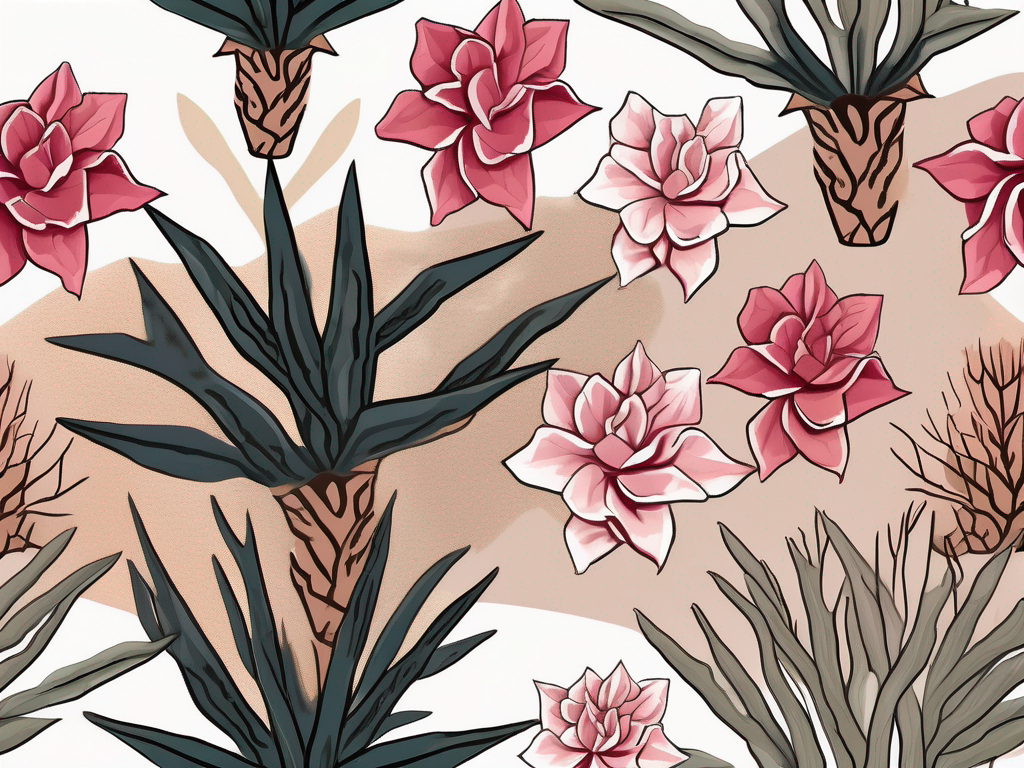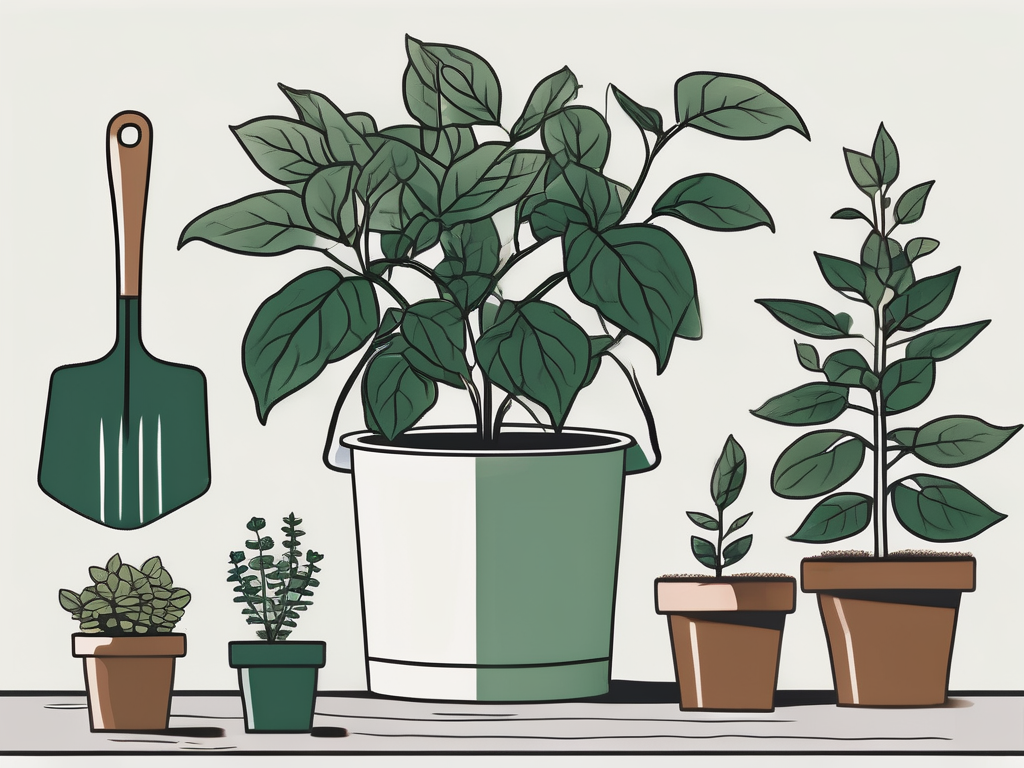
Imagine having a plant that's as eye-catching as a piece of modern art—meet the Desert Rose, a succulent that's as unique as it is beautiful. With its striking, swollen trunk and vibrant blooms, this plant brings a touch of the exotic to any space. Whether you're a seasoned plant parent or just starting out, understanding the different types of Desert Rose can help you choose the perfect one for your collection.
In this guide, we'll take a closer look at various types of Desert Rose, their distinctive features, and how to care for them. We'll also explore some tips for incorporating these beauties into your home decor. So, grab a cup of tea, sit back, and let's get started on this botanical journey.
The Basics of the Desert Rose
The Desert Rose, known scientifically as Adenium obesum, is a member of the Apocynaceae family. This plant is native to regions of Africa and the Arabian Peninsula, where it thrives in arid conditions. Its most recognizable feature is the bulbous, water-storing trunk, called a caudex, which allows the plant to survive in dry climates.
What makes the Desert Rose truly captivating, however, are its flowers. These blooms can range from deep reds to soft pinks, and even pure whites. They appear as clusters at the tips of the branches, offering a stark contrast to the plant's thick, leathery leaves.
While the Desert Rose is often considered a single species, there are several varieties and hybrids that plant lovers can enjoy. Each has its own unique charm, making it a versatile addition to your home or garden.
Classic Varieties of Desert Rose
When it comes to classic Desert Rose varieties, the traditional Adenium obesum is the most well-known. This variety is prized for its resilience and adaptability, making it a favorite among plant people. Its flowers typically showcase shades of pink and red, though some may also display white or yellow hues.
Another notable variety is the Adenium arabicum, which is often distinguished by its thicker trunk and broader leaves. This type tends to have a more pronounced caudex, giving it an even more dramatic appearance. Its flowers are similar in color to those of the Adenium obesum, but the plant's overall stature makes it a statement piece in any collection.
These classic varieties are generally easy to care for, requiring minimal watering and plenty of sunlight. They're ideal for those who are new to growing Desert Roses, as they can tolerate a range of conditions while still producing stunning blooms.
Unique Hybrids and Cultivars
If you're looking to add a bit of novelty to your plant collection, consider exploring some of the unique hybrids and cultivars of the Desert Rose. These plants have been selectively bred to produce unusual colors and patterns, offering a fresh take on this beloved species.
One popular hybrid is the Adenium 'Black Ruby', known for its deep, almost black flowers with ruby-red undertones. This striking variety adds a touch of drama to any arrangement, making it a conversation starter in your home.
For those who prefer a softer palette, the Adenium 'Pink Diamond' offers delicate, blush-pink flowers with white edges. This cultivar is perfect for creating a romantic, dreamy atmosphere in your space.
These unique hybrids may require a bit more attention in terms of care, but the payoff is well worth it. By experimenting with different varieties, you can find the perfect Desert Rose to suit your style and preferences.
Creating the Ideal Environment
Now that you've got your Desert Rose, it's time to set it up for success. These plants are sun lovers, so be sure to place them in a spot where they'll receive plenty of bright, indirect light. A south-facing window is usually a great choice for indoor plants.
Desert Roses prefer well-draining soil, similar to what you'd use for cacti or succulents. You can create your own mix by combining regular potting soil with sand or perlite. This will help prevent root rot, a common issue for Desert Roses if they're overwatered.
Speaking of watering, it's important to let the soil dry out completely between waterings. During the growing season, you might water them every 7-10 days, but in the winter, when the plant is dormant, you can reduce this to once a month or less.
Pruning and Maintenance Tips
Regular pruning is essential to keeping your Desert Rose looking its best. Pruning helps maintain the shape of the plant and encourages new growth, leading to more flowers. The best time to prune is in the spring, just before the growing season kicks in.
When pruning, use clean, sharp scissors or pruning shears to remove any dead or damaged branches. You can also trim back any overly long stems to keep the plant compact and bushy. Be sure to wear gloves, as the sap of the Desert Rose can be irritating to the skin.
In addition to pruning, it's a good idea to check your plant regularly for signs of pests or disease. Common issues include spider mites, mealybugs, and fungal infections. If you spot any of these, treat the plant promptly with neem oil or insecticidal soap.
Propagating Your Desert Rose
If you find yourself wanting more Desert Roses, propagation is a rewarding way to expand your collection. The most common method of propagation is through cuttings, which can be taken during the spring or summer months.
To propagate, start by taking a healthy cutting from your Desert Rose, about 4-6 inches long. Let the cutting dry out for a day or two, allowing the cut end to callus over. This helps prevent rot when you plant it.
Once the cutting is ready, plant it in a well-draining soil mix and water sparingly. Over the next few weeks, keep the soil slightly moist but not soggy. With some patience, you'll start to see new growth, indicating that your cutting has successfully rooted.
Incorporating Desert Roses into Your Decor
Desert Roses aren't just beautiful on their own—they can also be a stunning addition to your home decor. Their sculptural form and vivid blooms make them a natural focal point in any room.
Consider placing a Desert Rose in a decorative pot on a windowsill, where it can soak up the sun's rays. You can also group several Desert Roses together to create a mini indoor garden, experimenting with different heights and colors for visual interest.
For a more minimalist look, try pairing a Desert Rose with neutral-toned accessories, such as white or beige pots. This allows the plant's vibrant flowers to take center stage, adding a pop of color to your space.
Seasonal Care Tips
Desert Roses have different needs throughout the year, so it's important to adjust your care routine accordingly. During the growing season, which typically runs from spring to early fall, your plant will require more water and nutrients to support its growth and flowering.
Fertilize your Desert Rose every 4-6 weeks during this time with a balanced, water-soluble fertilizer. This will help ensure that your plant has the nutrients it needs to produce vibrant blooms.
In the winter, when the plant goes dormant, reduce watering and stop fertilizing altogether. This rest period is crucial for the plant's overall health and encourages more robust growth in the spring.
Common Problems and Solutions
Even with the best care, Desert Roses can sometimes run into problems. One common issue is yellowing leaves, which can be caused by overwatering or inadequate light. If you notice this, check your watering schedule and make sure your plant is getting enough sunlight.
Another potential problem is root rot, often due to poor drainage or excessive watering. To prevent this, ensure your plant is in a well-draining pot and allow the soil to dry out between waterings.
If you encounter pests such as spider mites or aphids, treat them with insecticidal soap or neem oil. Regularly inspecting your plant for early signs of these pests can help you tackle the problem before it becomes severe.
Final Thoughts
Desert Roses are a stunning addition to any plant collection, offering a unique blend of beauty and resilience. From classic varieties to unique hybrids, there's a Desert Rose for every taste and style. By understanding their care needs and incorporating them into your decor, you can enjoy the charm of these plants for years to come.
At Cafe Planta, we're passionate about helping you cultivate your love for plants. Whether you're looking for advice on plant care or searching for a new addition to your collection, we're here to support you. Feel free to email us with any questions or connect with us on Instagram. Let's bring a little more green into our lives together!












